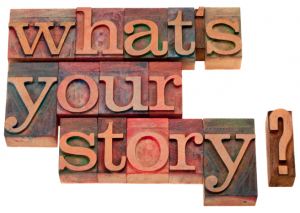We’ve all been there. You are held captive in a dimly lit room listening to a presentation. The presenter has his back to the audience and is reading each and every one of the bullets on his slide. And the sub-bullets. Just when you think you are free, the next slide flies in from the right, with more bullets to be read, one …by…one.
Or maybe you were the presenter in that dimly lit room. You feel the need to include every last bit of detail about your product in your presentation because if you didn’t, the audience would never understand your value proposition. So you created slide after slide of details and features and benefits and information “about us.”
The problem with presentations like these is that you loose the opportunity to create a connection between the audience and your message. And because people like to buy from people they know and trust, missing that connection means you miss an important step in the sales process.
Don’t let this be you. If you are developing a presentation, before you even open PowerPoint, take a moment to read these helpful strategies.
Tell A Story
There is a moving scene in the movie Saving Mr. Banks where Walt Disney (Tom Hanks) says to Mary Poppins author P.L. Travers (Emma Thompson), “That’s what storytellers do. We restore order to imagination. We instill hope again and again.”
And that’s what your presentation needs to do: tell a story that reignites the audience’s imagination and enables them to see your solution as part of their story.
 You can’t inspire that type of imagination in a list of bullets. Instead, your presentation needs to be a compelling story about who you are, the products you offer, and the difference your product can make in your customers lives and in their businesses.
You can’t inspire that type of imagination in a list of bullets. Instead, your presentation needs to be a compelling story about who you are, the products you offer, and the difference your product can make in your customers lives and in their businesses.
The heart of this type of presentation is a clear message, which we talked about in a previous blog post (How to Create a Successful Public Relations Campaign For Your Business). As we mentioned there, you need to start by clearly identifying who your company is and what value you bring to your customers.
Then, put all of that messaging together in a story. Start by thinking about your audience and what they want to hear. What problems are they facing? What will make a difference to them? Think about the role that your company or product plays in solving those problems. The answers to these questions are the outline of your presentation.
Let’s look at an example. I used to work for a web-to-print company. We had several detailed presentations about our technology. Our most compelling presentation, however, was the story of a printer based in Ohio. In that presentation, we didn’t talk about our technology at length; rather, we told the story about the printer, the challenges they were facing, and the positive impact our technology had on his business
This way, by far, one of the most successful presentations we did because it was a real story. Other printers could see themselves in this story, and could recognize how they too could be successful.
Your story may not be about a customer. It may be about how your company’s mission came about, and the products that are a result of that mission. Or, it may be about the dedication of your employees and the level of service they provide.
It’s not easy to move your presentations from the familiar bulleted list to the story telling format. But once you do – and you see the response you get – you’ll never go back to your bulleted list.
Connect with Marion: Create Communications / EMAIL / LinkedIn / Twitter @mbbennett














One Response
Instead of Powerpoint, check out Prezi – a great visual addition to incredible stories.